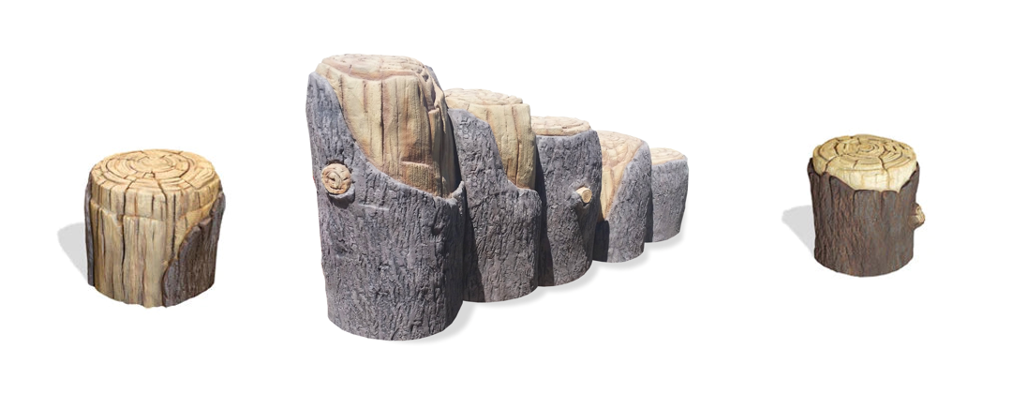Children love to play in nature; the contact with the outdoors, the rocks, the trees, and the grass make the play experience an incredible adventure. It is possible to transmit and enhance that play experience in the comfort of public playgrounds or schools, even in your home, including wooden logs or log rolls. And one of the children’s favorite activities is climbing and jumping between rocks and logs. Below you will learn more about these entertaining elements for everyone.
What are wooden logs and log rolls?
These elements are ideal for developing motor skills, sensory education, balance, and spatial awareness. It can be used in indoor and outdoor play systems. They are an element for playgrounds that can be used alone or together and are available in various shapes and sizes, simulating pieces of logs. The appearance of the wooden logs and roll logs perfectly simulates a real piece of wood, perfectly shaped so that children have a smooth, solid surface to stand on without risk of injury from splinters.
How are wooden logs and log rolls used?
In the case of the wooden logs, they can be used to jump between them; they can be all the same size or increase the height of each of them so that each time they get higher, thus, increasing the difficulty. Wooden logs can be used to create zigzagging paths for children to run through. They can also be used as seats in case children want to rest. In the case of roll logs, children climb on them with the help of a support point and rotate the trunk. In both cases, these elements can be used individually or in a group for infinite imaginative and creative games combined with physical activity.
Logs for balance
One of the primary skills that are developed with the use of the logs is balance and equilibrium, either to jump from one to another or to make them rotate; the child must learn to maintain balance, being aware of their weight, his center of balance, the balance he must keep in his body and the coordination between his limbs to be able to take the next step satisfactorily. Spatial awareness and timing become very important in these games as the child learns about the distance to travel and the right time to get from one side to the other.
Developing motor skills
Gross motor skills are fundamental to developing fine motor skills, which is why children need to gain awareness, control, coordination, and confidence in large muscle movements before moving on to smaller, fine-tuned movements. In this way, children with well-developed gross motor movements through repetition of exercises such as jumping, running, and holding on, among others, benefit when they have to perform activities that require a higher level of mastery, such as writing or using tools.
What did you think of this topic? What do you think about wooden logs and roll logs?
If you are interested in wooden logs or roll logs, contact us by visiting the following link.
